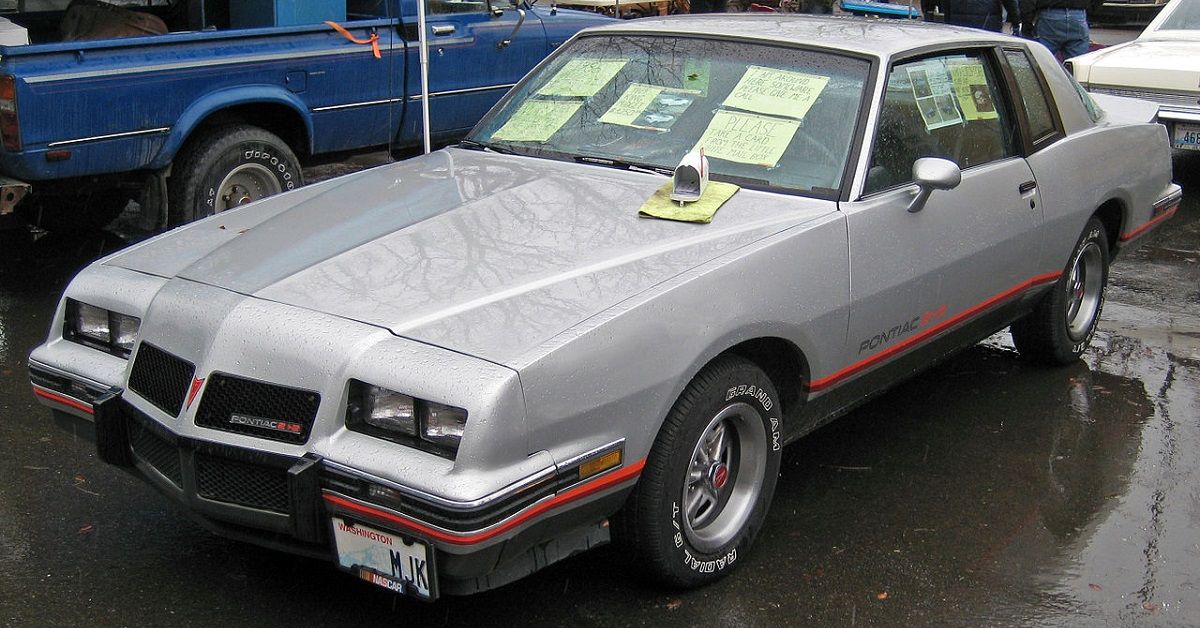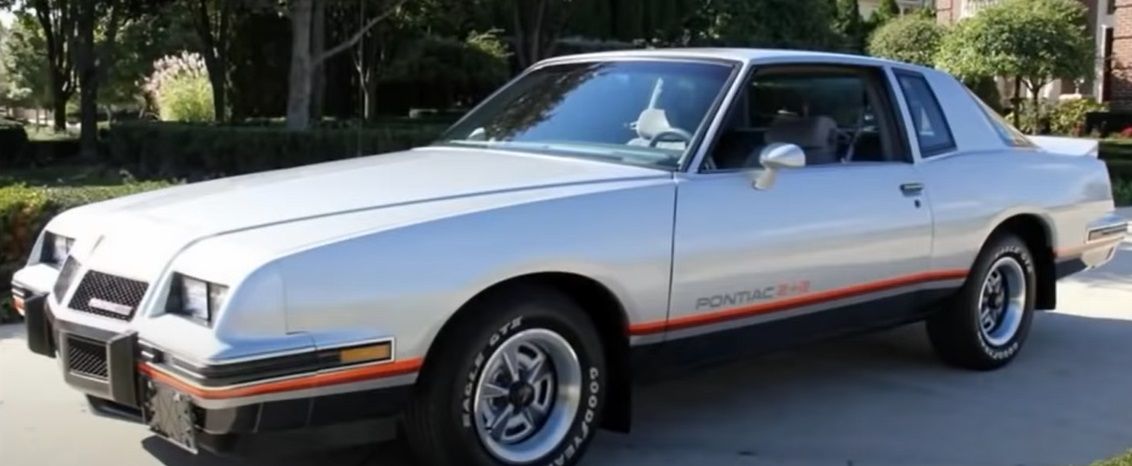The 1986 Pontiac Grand Prix 2+2 was built for exactly the same purpose as the famous Dodge Charger Daytona and Chrysler’s Plymouth Superbird; to dominate NASCAR ovals. During the '80s, General Motors grew tired of losing to Ford’s mischievous Thunderbird coupes on the track, and as a result, both Pontiac and Chevrolet separately began efforts to produce a better, more competitive machine, and both yielded quite similar results.
In 1986, GM approved the release of Chevrolet’s Monte Carlo SS Aerocoupe and Pontiac’s Grand Prix 2+2. Both coupes featured a G-body platform and improved aerodynamics that proved to be quite significant on the track.
So, let's take a closer look at this 1986 ride and what made it special.
The Grand Prix 2+2 Aerocoupe’s Window Of Opportunity
The Pontiac Grand Prix debuted in 1962 and a total of seven different generations were produced until it was retired in 2008. General Motors’ G-body coupes had a slight drawback with their blocky, squared-off roof lines and at increasingly high speeds, the vehicles suffered from aerodynamic drag and rear-end lift which compromised the vehicle’s handling and overall performance in NASCAR circuits.
Unlike the Pontiacs, Ford’s Thunderbirds were more streamlined, and drivers like the famous Billy Elliot could maintain high speeds and slip through tight corners with minimum drag in races while other drivers had to sacrifice momentum to turn safely.
The Grand Prix was Pontiac’s NASCAR entry for 1986, and due to its dissatisfying performance, they introduced a homologation variant called the 2+2, which, much like Chevy’s Monte Carlo, was fitted with a signature bubble rear window for enhanced aerodynamics.
The odd rear window smoothly edges out the car’s rear rooflines and bridges out to an aggressive duck-tail spoiler on the rear providing a 2.7% reduction in drag coefficient while on the track, hence the nickname aerocoupe.
The new Grand Prix required a new rear deck design as well to sit beneath that glass window, so a new stubbier but much smaller trunk lid had to be introduced compared to its G-body predecessors. Despite its tiny opening, it's pretty remarkable that the trunk space is basically the same size as any other G-body coupe, so you don't have to worry about smaller storage space.
What's So Special About The Pontiac Grand Prix?
Pontiac’s full-size V8 Grand Prix coupe debuted as a replacement for the Pontiac Ventura, although the Pontiac Grand Prix was built more so with an emphasis on performance. By the second generation of the Grand Prix, the model was reduced to a midsize offering but maintained the sporty aspect that Pontiac customers admired.
Pontiac is said to have manufactured an estimated total of 1,225 copies of the Grand Prix homologation variant, and much like many other famous NASCAR specials, many didn't sell at first.
Unlike the Daytonas, the rare aerocoupe 2+2 never made a famous breakthrough. Ever. With the new design changes that Pontiac made to the Grand Prix, the car wasn't as aesthetically pleasing as its G-body counterparts.
The Grand Prix 2+2 had a new front design with a slightly pointed nose and a front spoiler feeding air into the engine compartment. Pontiac also put in a 5.0-liter 165 HP V8 LG4 engine in the new 2+2 aerocoupe, despite Pontiac already having a more powerful 180 HP high output engine. They also fitted the homologation Grand Prix with a 4-speed automatic transmission.
Despite its oddball physique, it was the first time in nearly 20 years since General Motors’ self-imposed racing ban in 1963 that they had officially made enhanced, special production vehicles for the sole purpose of becoming successful on the track.
At a list price of roughly $18,000, Pontiac’s 2+2 aerocoupe costs roughly $2,000 more than the very similar Monte Carlo aerocoupe, despite offering 15 less horses than Chevy’s aerocoupe.
The 165 HP LG4 V8 engine in the Grand Prix 2+2, however, had a slight advantage with an extra 20 lb-ft of torque rated at 245-lb-ft peaking at a super low 2,400 RPM.
A vast selection of 2+2 were offered fitted with add-ons, including the following:
- AU3 power door locks
- A31 power windows
- Manual air conditioning
- CD4 wipers
- Left side automatic and right side manual rearview mirrors
- G80 limited-slip rear axle with F41 suspension
- Electronic cruise control
- N33 tilt steering column
- NP5 leather-wrapped steering wheel
- U21 instrument cluster with gauges
All 1,225 copies were painted with the same signature paint job; silver with a sleek red stripe in between, and a charcoal colored lower body trim.
The Pontiac Grand Prix 2+2 aerocoupe was and still is a valuable collectible for NASCAR and Pontiac fanatics around the globe, and although it didn't have half as much respect in the '80s as it does now, the aerocoupe is still considered a real OG in today's muscle car scene.



